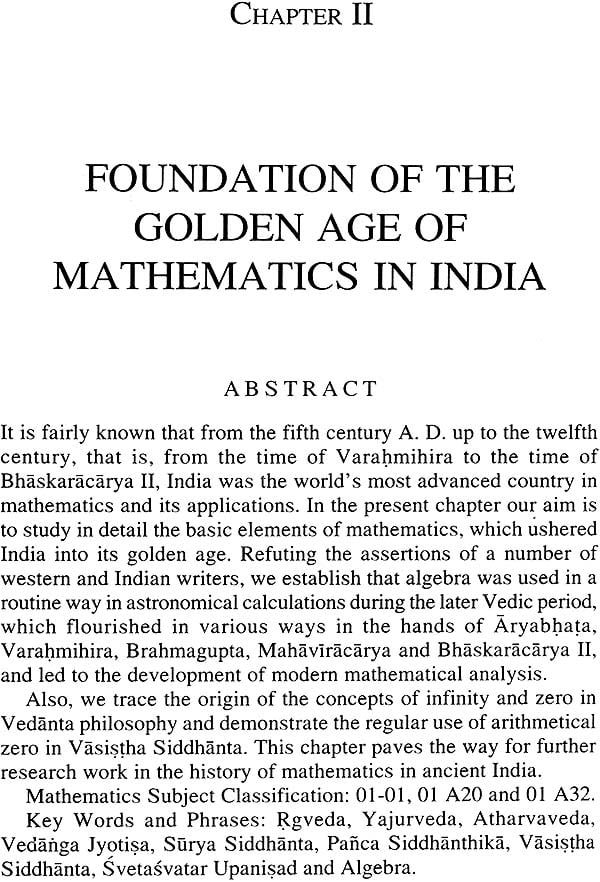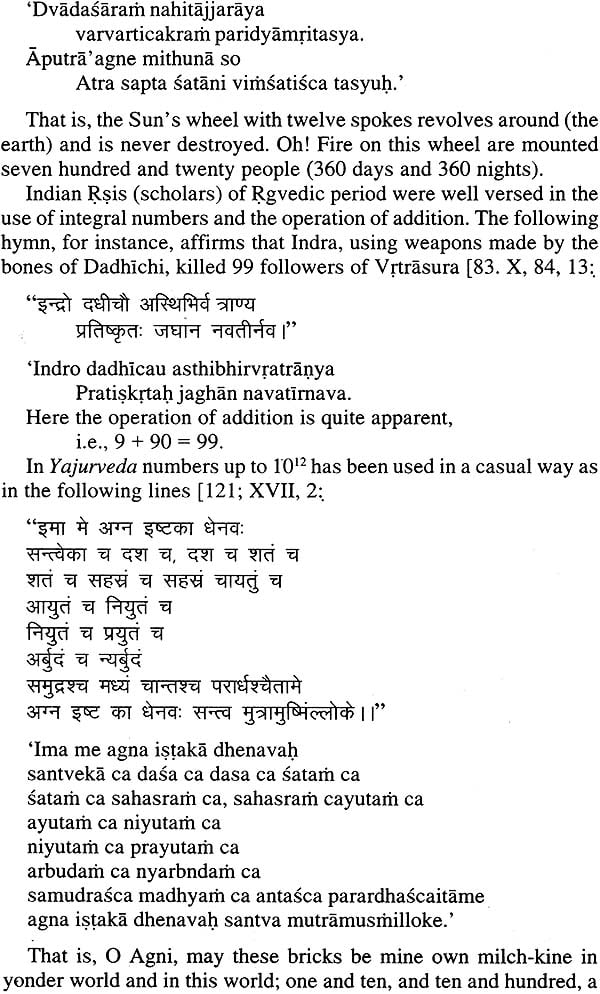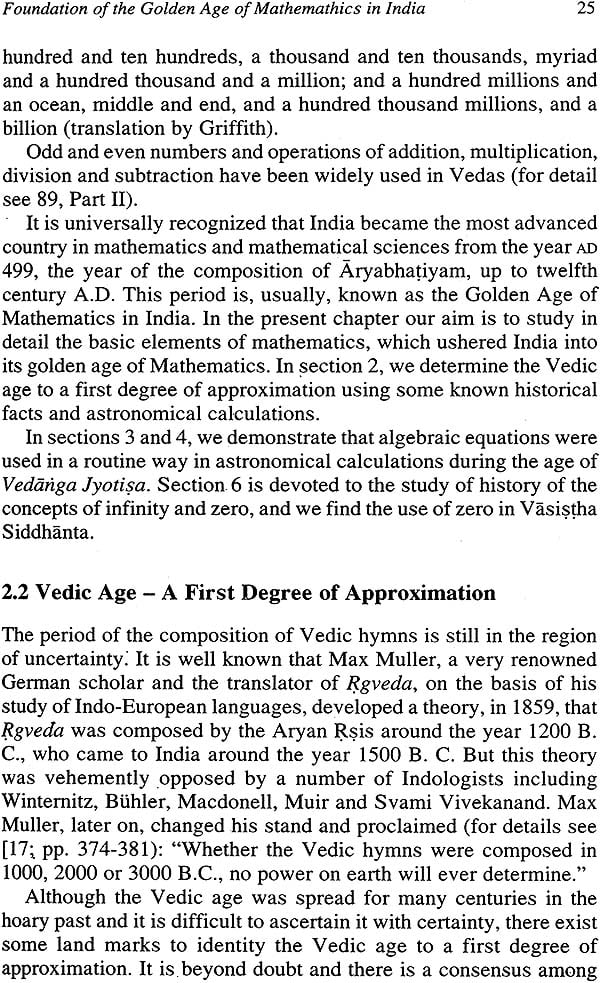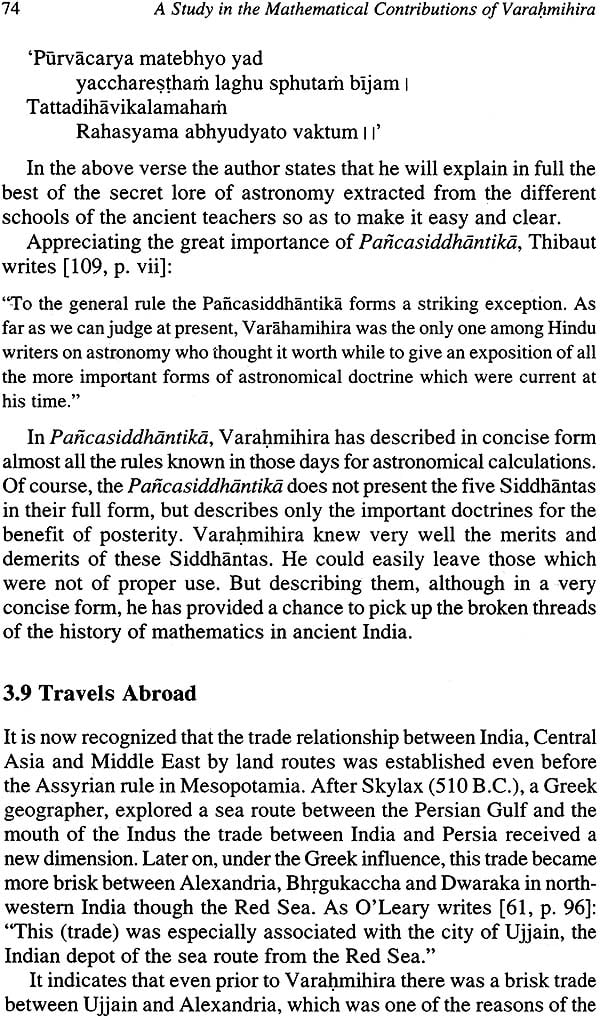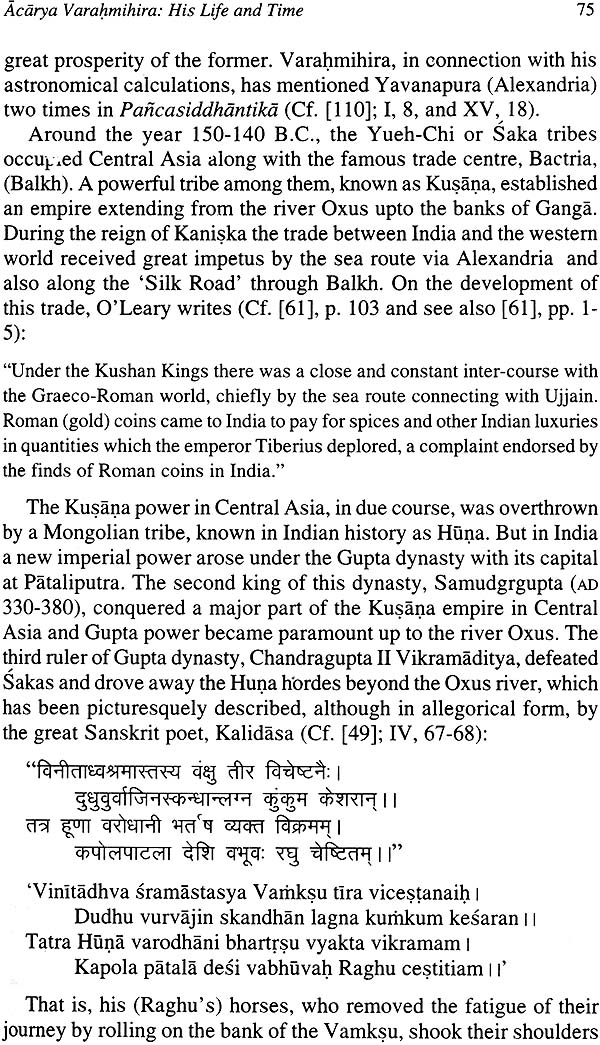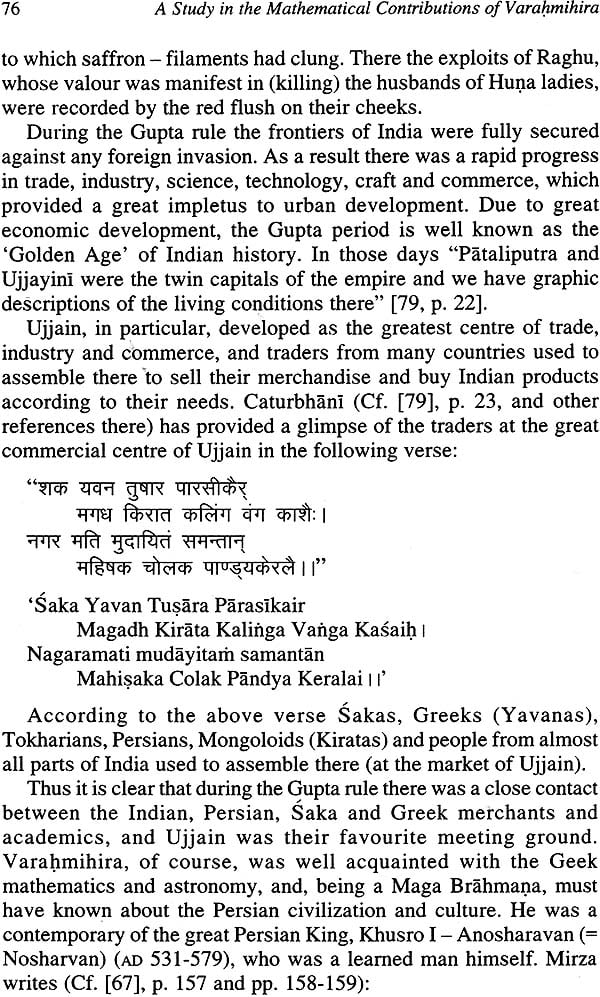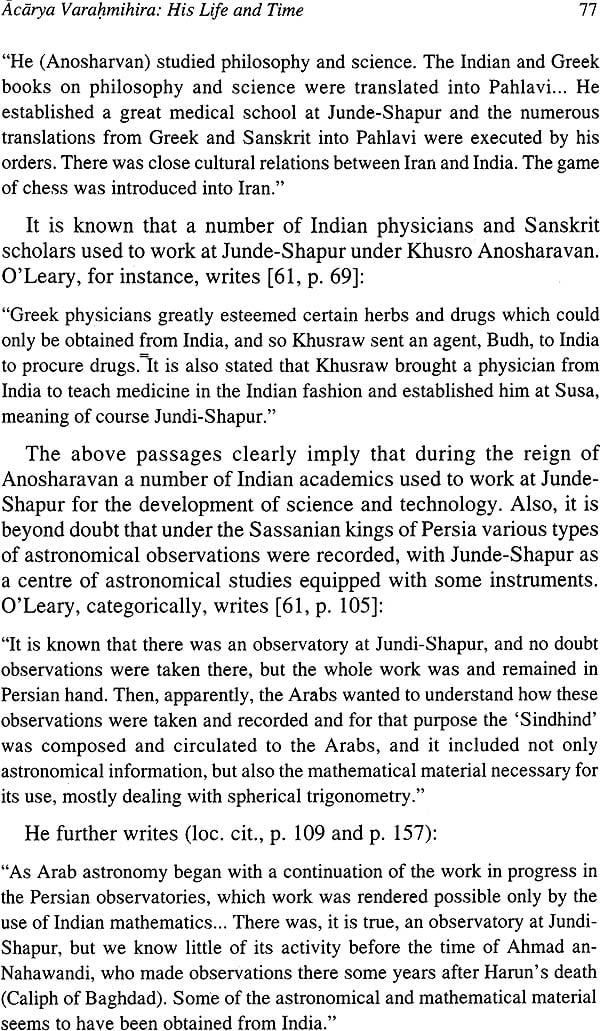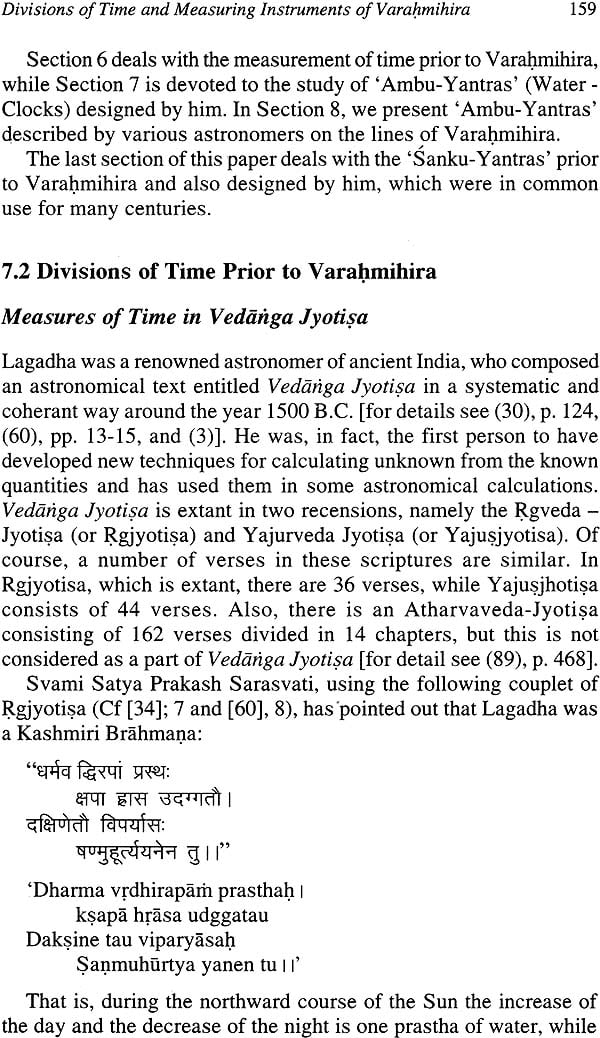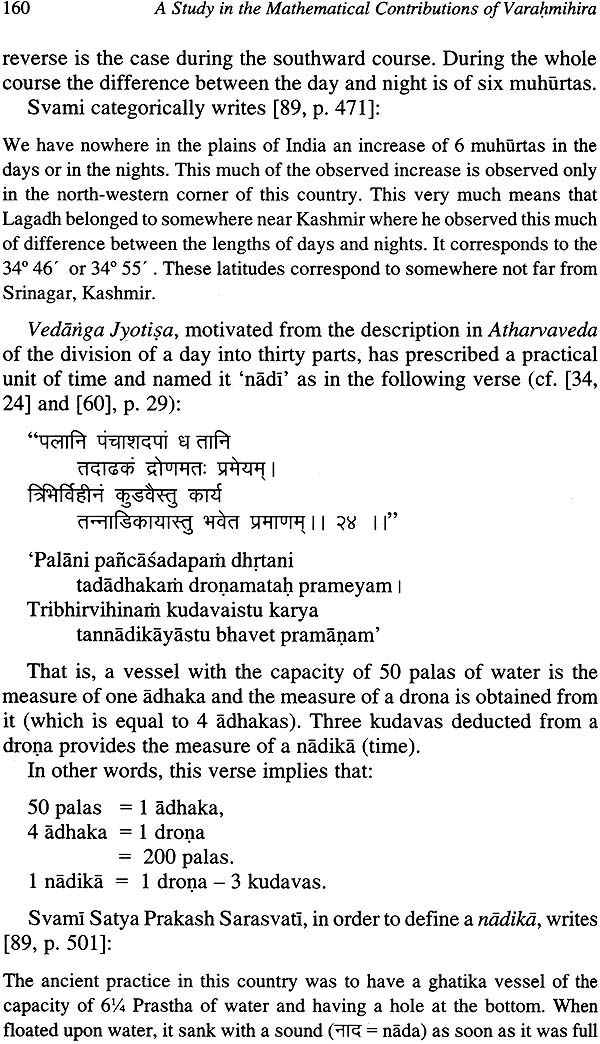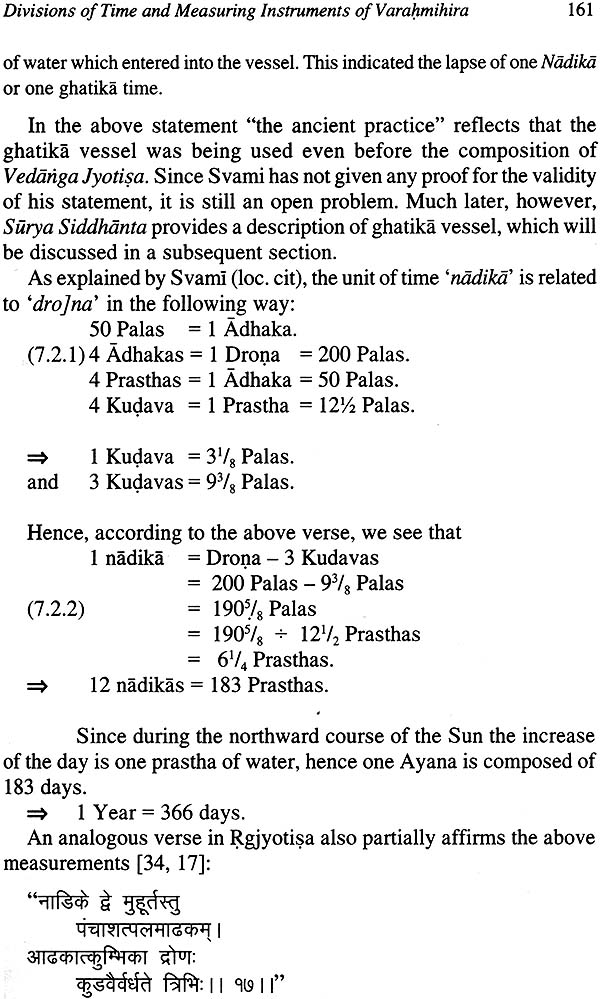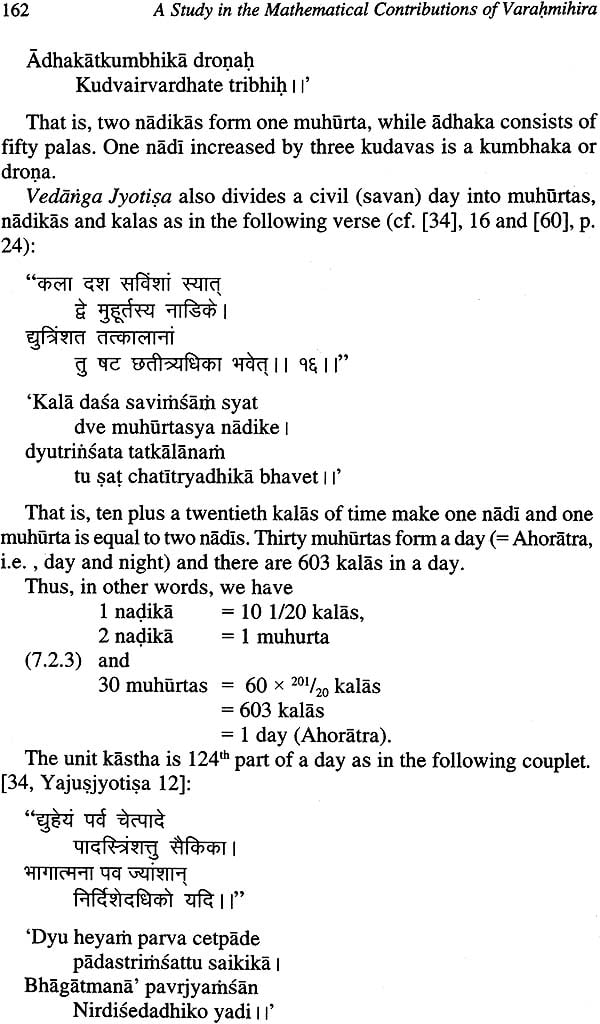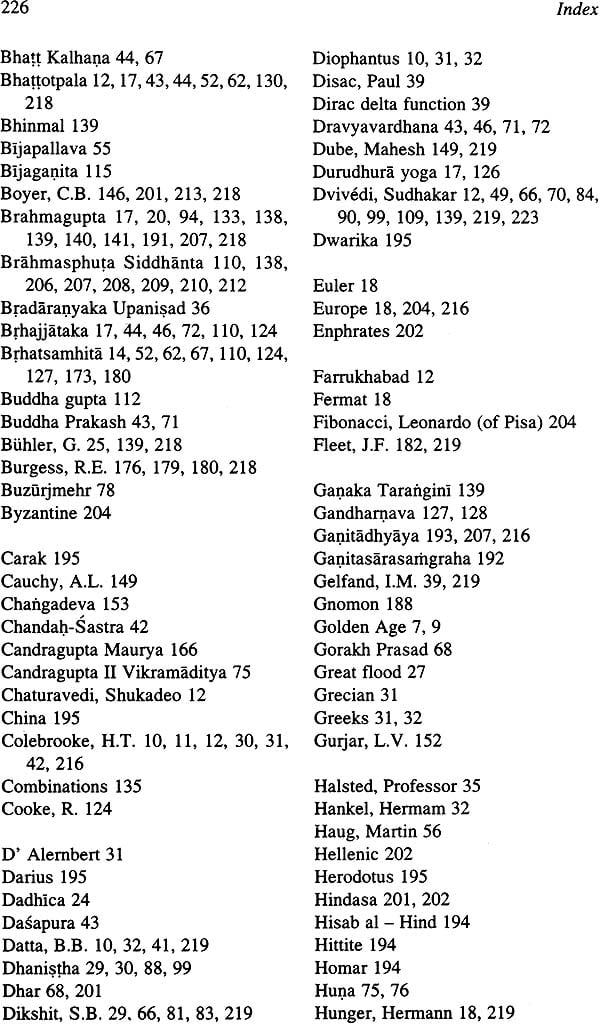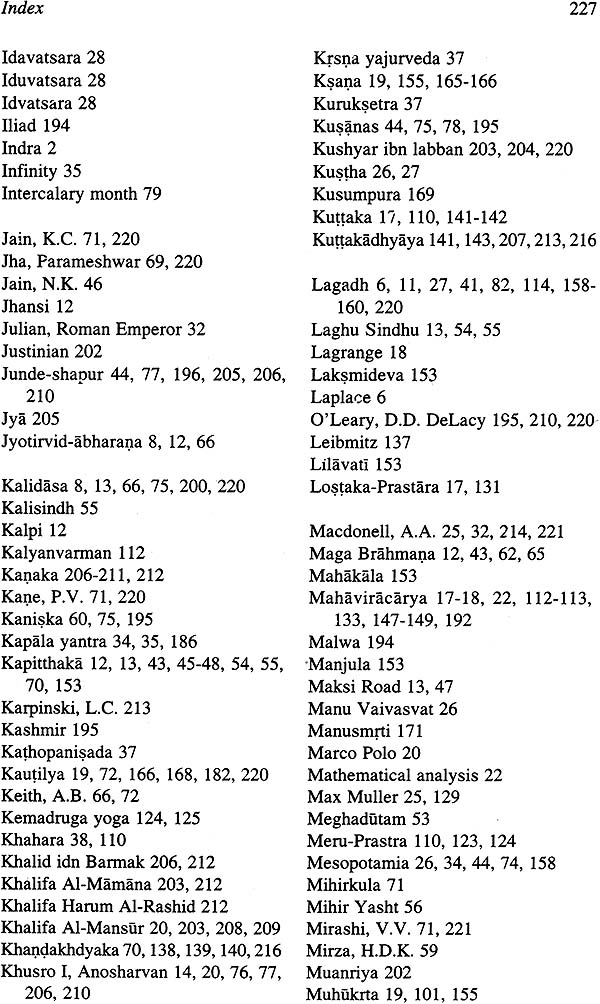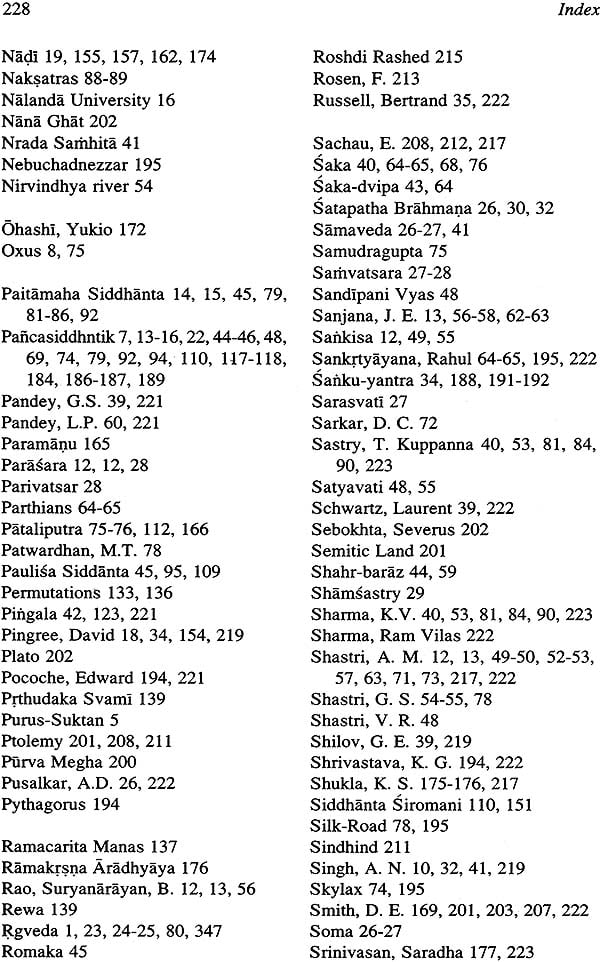
A Study In The Mathematical Contributions of Varahmihira And His Heritage
Book Specification
| Item Code: | NAH479 |
| Author: | G. S. Pandey |
| Publisher: | Indian Institute of Advanced Study, Shimla |
| Language: | Sanskrit Text With Transliteration and English Translation |
| Edition: | 2010 |
| ISBN: | 9788179860755 |
| Pages: | 240 |
| Cover: | Hardcover |
| Other Details | 9.0 inch x 5.5 inch |
| Weight | 420 gm |
Book Description
This book mainly focuses on the life and contribution of Acarya Varahmihira, one of the most outstanding mathematicians of the 'Golden Age of Mathematics' in India (from 5'" to 12'" Century AD), to the discipline. Since Varahmihira, following the ancient Indian tradition had written almost nothing about himself, there remained a lot of ambiguity about his life and flourishing time. It examines in detail almost all available evidences and attempts to set right the arising disputes. Refuting convincingly, the assertions of H.T. Colebrooke (1872) and Swami Satya Prakash Saraswati that Aryabhat was the founder of Algebra in India, the book presents a systematic account of algebraic equations, permutations and combinations from many centuries prior to Aryabhat and highlights the role of Varahmihira and his school up to the time of Bhaskaracarya.
The book claims that 200 years before the Ptolemy's observatory at Alexendria, two observatory were established at Ujjain and Dhar, which were renovated by Varahmihira, who constructed the first observatory of the Middle East at Junde- Shapur in Iran during the reign of the king Khusro-I Anosharvan.
Finally, it presents an interesting account of the journey of Indian Mathematics to the court of Khalifa AI Mansur, which paved the way for systematic development of Mathematics in Europe.
Professor G S Pandey completed M.Sc. in Mathematics from the University of Sagaur in 1960, securing second position in merit list. He obtained Ph.D and D.Sc degrees in 1963 and 1968 respectively for his research work on "Summability of Special Orthogonal Expansions".
Professor Pandey has been a Visiting Scholar at Mathematical Institute of Hungarian Academy of Science (Budapest), Fulbright Fellow (Chicago, USA) and Fellow, Indian Institute of Advanced Study, Shimla for three years. He worked for 15 years as Head, School of Studies in Mathematics, Vikram University. He was the President of Indian Society for History of Mathematics for six years. He has published 64 research papers in reputed foreign and Indian journals, five books and a novel about the life and work of Acarya Varahmihira (published by Bharatiya Jnanpeeth, New Delhi, 2009). Fourteen students have obtained Ph.D under his supervision. He worked as Editor, Vikram Mathematical Journal for 10 years and was reviewer for Zentralblatt fur Mathematik (Berlin) for 20 years. Presently, Professor Pandey is engaged in research work on Approximation Theory, Generalized Functions, Macroeconomic Analysis and History of Mathematics.
The present monograph is the outcome of my research work on the project entitled: 'A Study in Mathematical Contributions of Varahmihira and His Heritage' for the last three years at Indian Institute of Advanced Study, Rashtrapati Nivas, Shimla. It contains eight chapters followed by a complete bibliography of the relevant literature and an index of the appropriate terms referred to in the body of this work. Chapter I is introductory, which provides a glimpse of the initial development of mathematics and basic structure of this monograph. Chapter II contains a short account of that development from the Vedic age up to the time of Varahmihira, which formed the foundation to usher India into its golden age of mathematics.
Chapter III is devoted to the study of the personal life and age of Varahmihira, including the genesis of his name and foreign travels. In this chapter we establish that his real name was (Varahmihira)', which in colloquium was distorted as (Varahamihira)'. Throughout this work, therefore, we use his former name, but write the latter in verbatim quotations.
Chapter IV deals with the algebraic models, which have been used in 'Paitamaha Siddhanta ' to determine some unknown astronomical quantities from the known data. In continuation of our study of algebraic models in ancient India, we devote Chapter V to discuss some algebraic models as presented by Varahmihira in Chapter II of Pancasiddhantika entitled (Naksatradicchedah)'.
In Chapter VI, we present some salient features of algebra used by Varahmihira in Pancasiddhantika, Brhajjataka and Brhatsamhita.
Also, in order to highlight the rich heritage of Varahmihira, we give a few contributions made by Brahmagupta, Mahaviracarya and Bhaskaracarya, the three most prominent mathematicians of Varahmihira's Gurukula, for the development of algebra and its applications.
Chapter VII is devoted to the study of the various divisions of time and their measurements from the Rgvedic age upto the time of Varahmihira. Also, using evidences from Atharvaveda, we refute the claims of Hermann Hunger and David Pingree (1999) that the most fundamental Indian units of time, namely 'Nadi' and 'Muhurta', were borrowed from the Babylonian sources around the year 500 B.C.
In the last chapter of this monograph, we study in detail the fascinating history of the spread of Indian numerals, arithmetic and Kuttaka in the Semitic land. We discuss in detail the translations of Brahmasphuta Siddhanta and Khandakhadyaka in Arabic language, and the composition of Al Kitab Al-Muktasara fi Hisab Al-Jabr Waal Muqabala by Abu Abdulla Mohammad Ibn Musa Al-Khwarizmi as a derivative of the Kuttakadhyaya of Brahmagupta, which paved the way for the development of algebra and its applications in Europe.
This study provides not only a probe in the history of ancient Indian mathematics, but also presents a number of new results and paves the way for further research work in this area.
I take this opportunity to acknowledge my deep gratitude to the authorities of Indian Institute of Advanced Study for providing a fellowship and all other facilities to complete the project.
I wish to express my deep gratitude to Professor Dr. Suresh Chandra Pandey, former Head, Department of Sanskrit, Allahabad University, for many useful, free and frank discussions about the Vedic Mathematics and its heritage. Also, I am highly thankful to Professor Dr. Sheel Sindhu Pandey, Department of Mathematics and Computer Science, Rani Durgavati University, Jabalpur, MP, for reading a major part of the manuscript and offering a number of helpful suggestions to improve it.
I take this opportunity to acknowledge my indebtedness to Mrs. Pushpa Lata Sharma, Senior Library Attendant, IIAS, for providing library facilities and assistance in locating useful and valuable reading materials. Also, I wish to express my thankfulness to Miss Manju Rauthan for neatly typing the manuscript at a short notice.
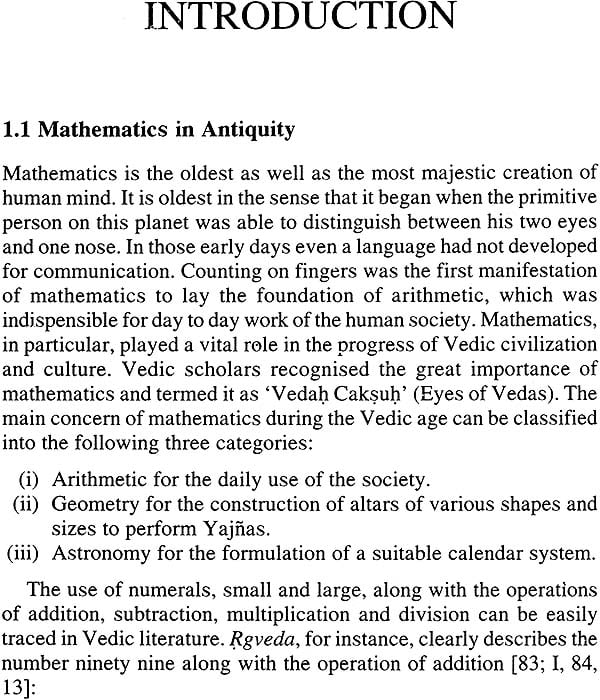

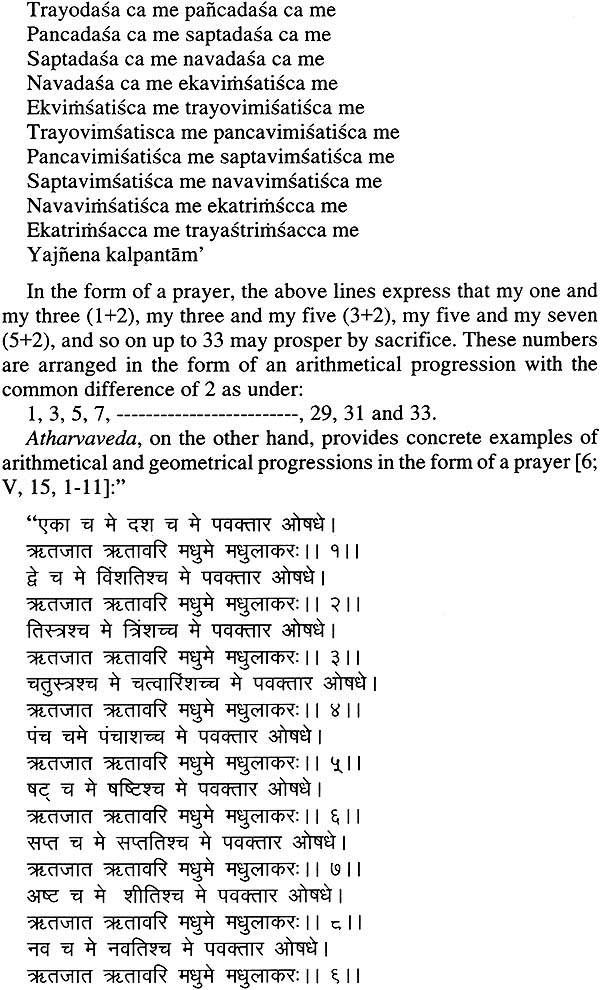
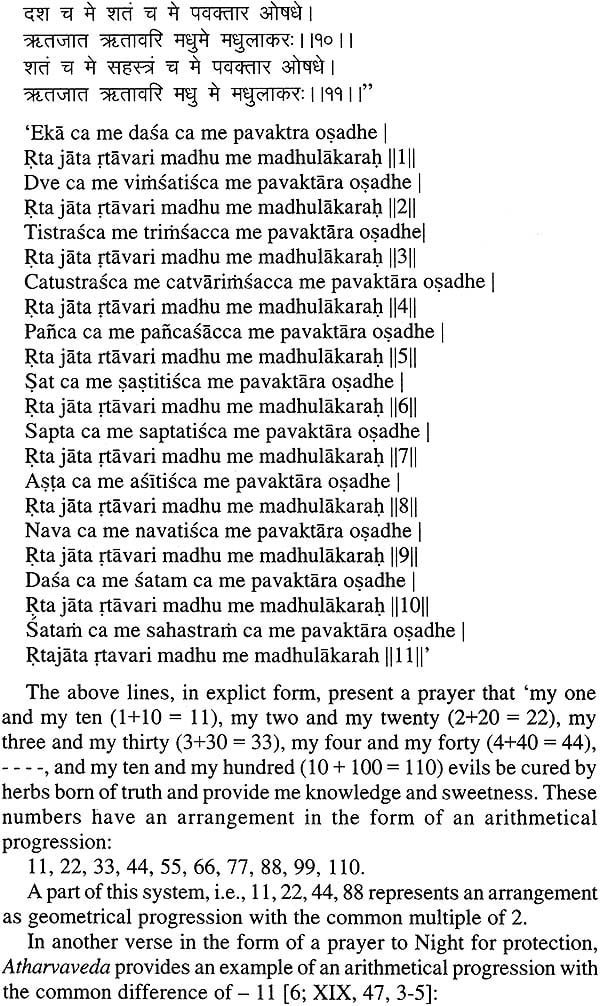
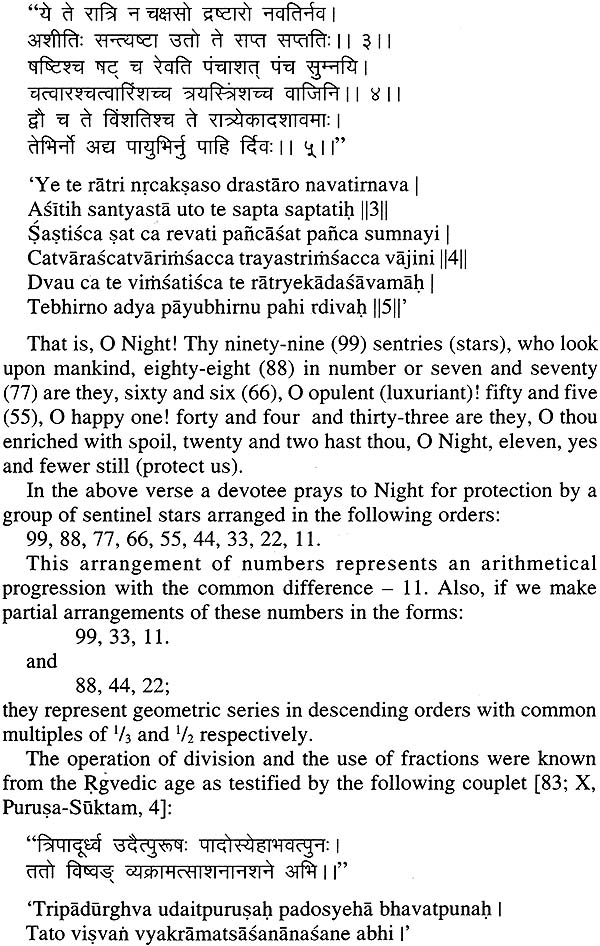
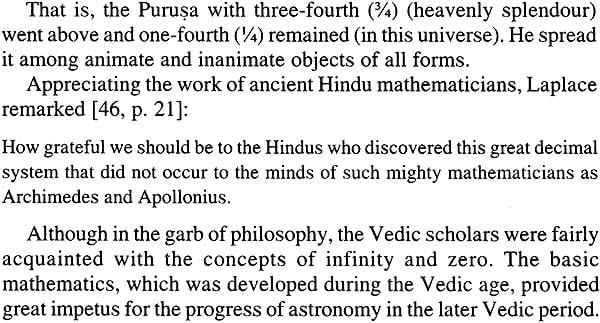
| Roman Transliteration of Devanagari | viii | |
| Preface | IX | |
| 1 | Introduction | 1 |
| 2 | Foundation of the Golden Age of Mathematics in India | 22 |
| 3 | Acharya Varahmihira: His Life and Time | 43 |
| 4 | Algebraic Models in Paitamaha Siddhanta | 79 |
| 5 | Algebraic Models in Vasistha Siddhanta | 93 |
| 6 | Development of Algebra at Varahmihira's Gurukula | 110 |
| 7 | Divisions of Time and Measuring Instruments of Varahmihira | 154 |
| 8 | Hisab AI-Hind | 193 |
| Bibliography | 217 | |
| Index | 225 |
